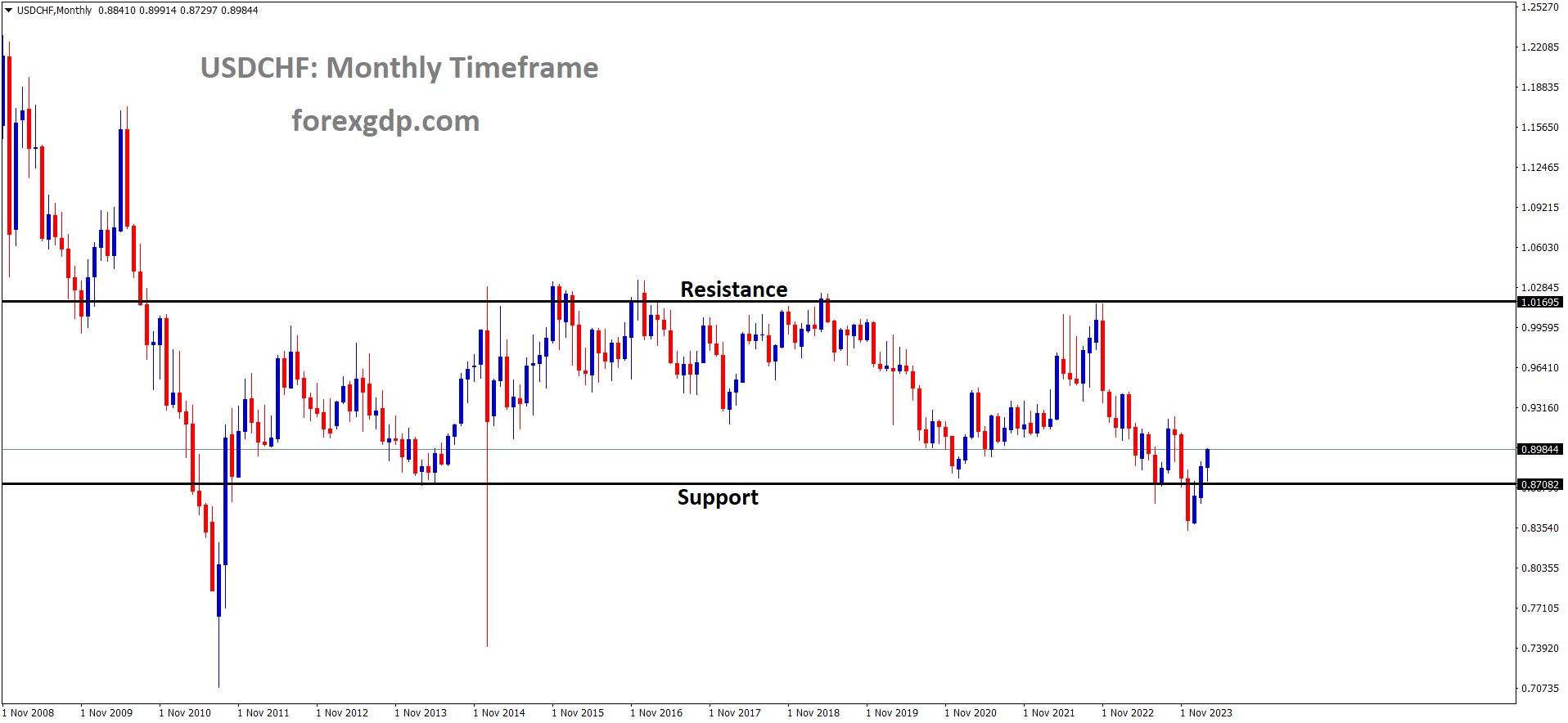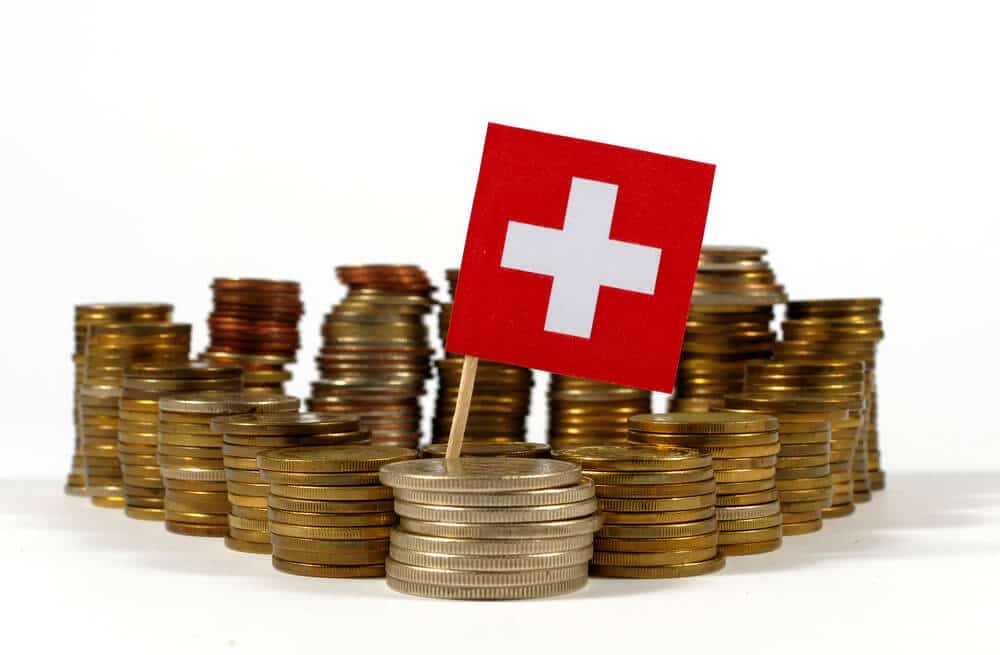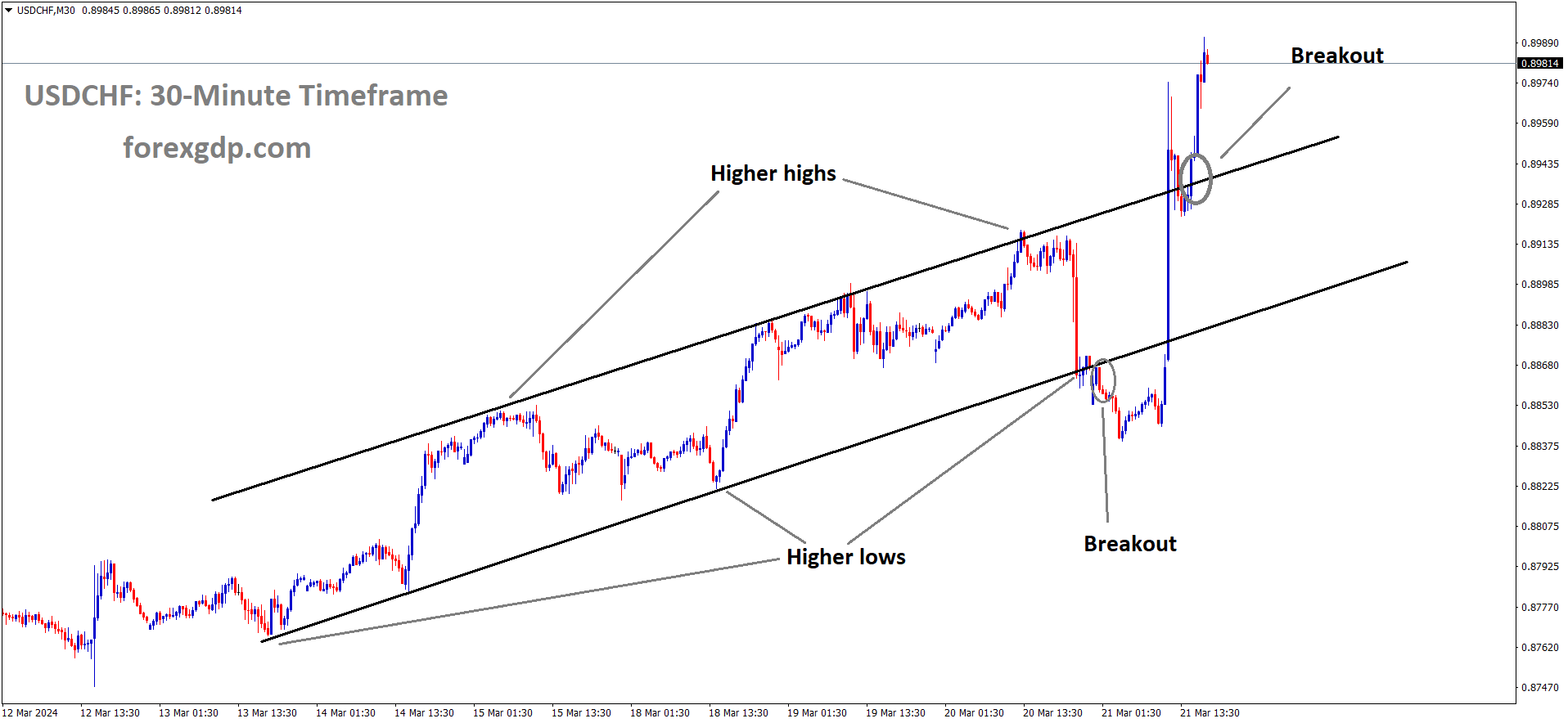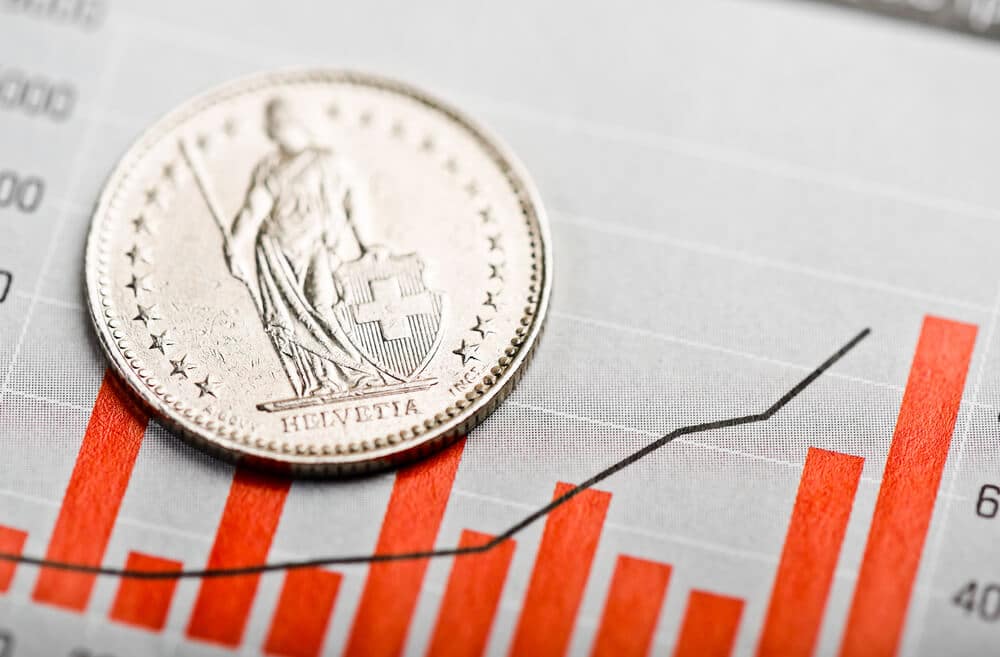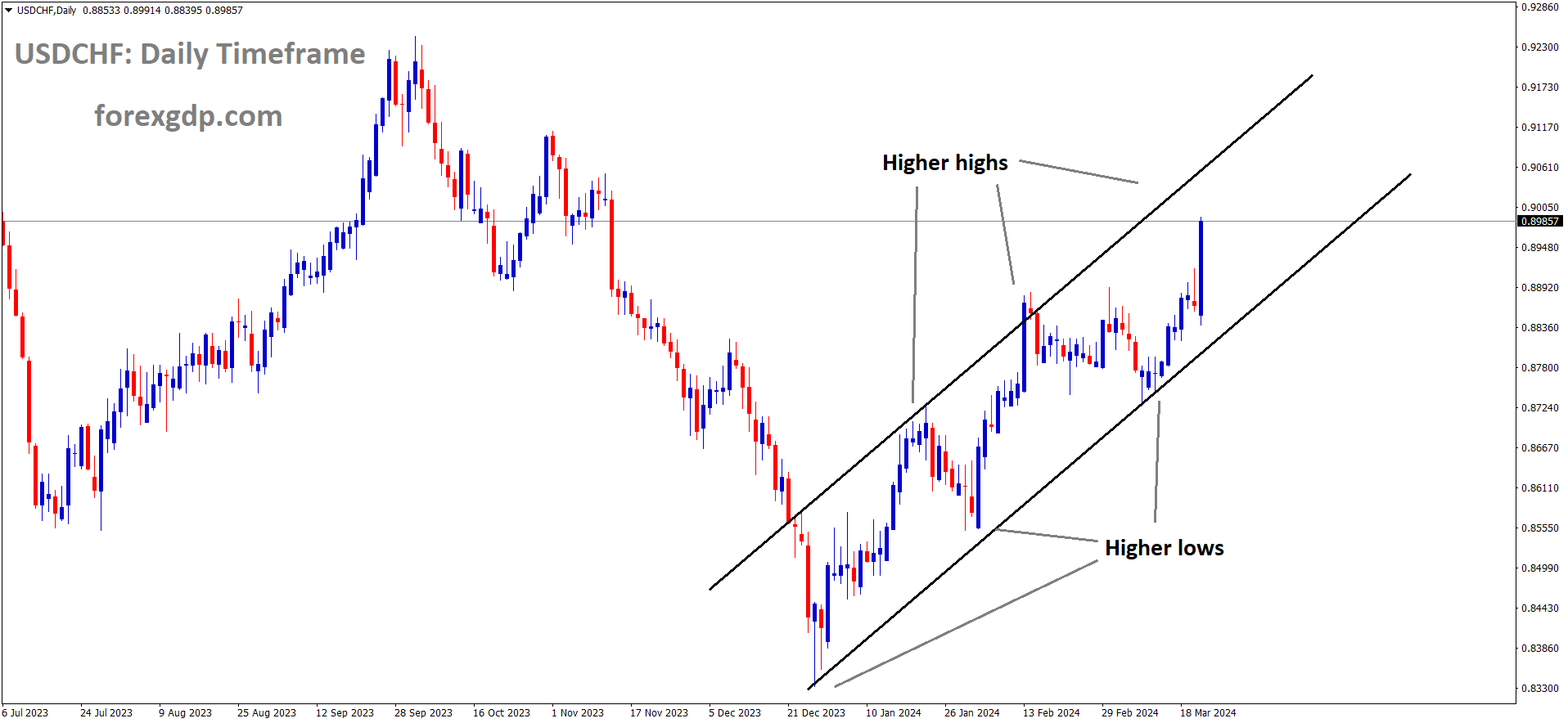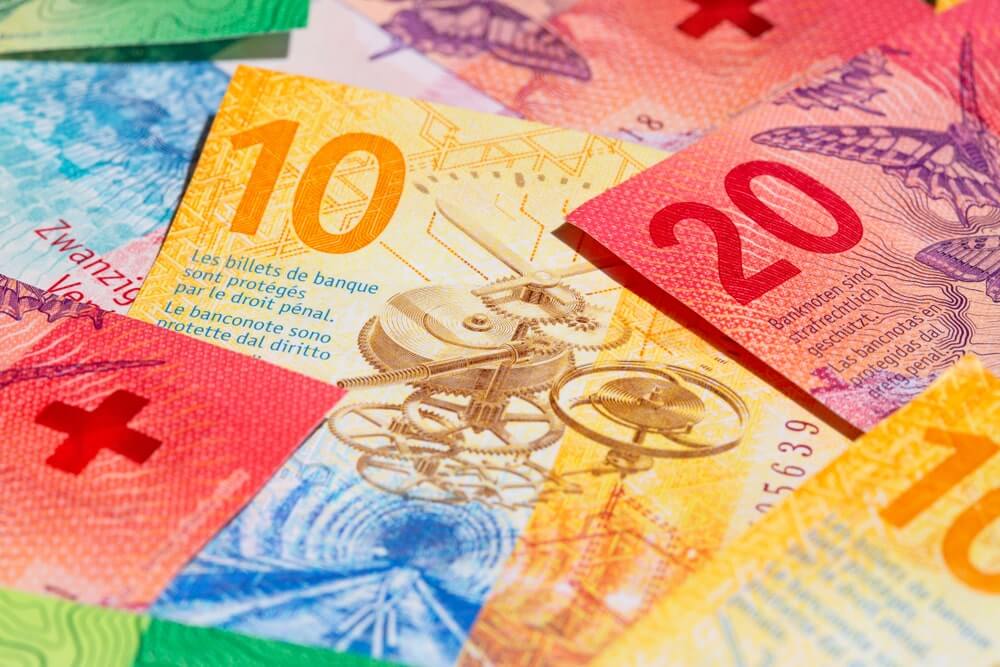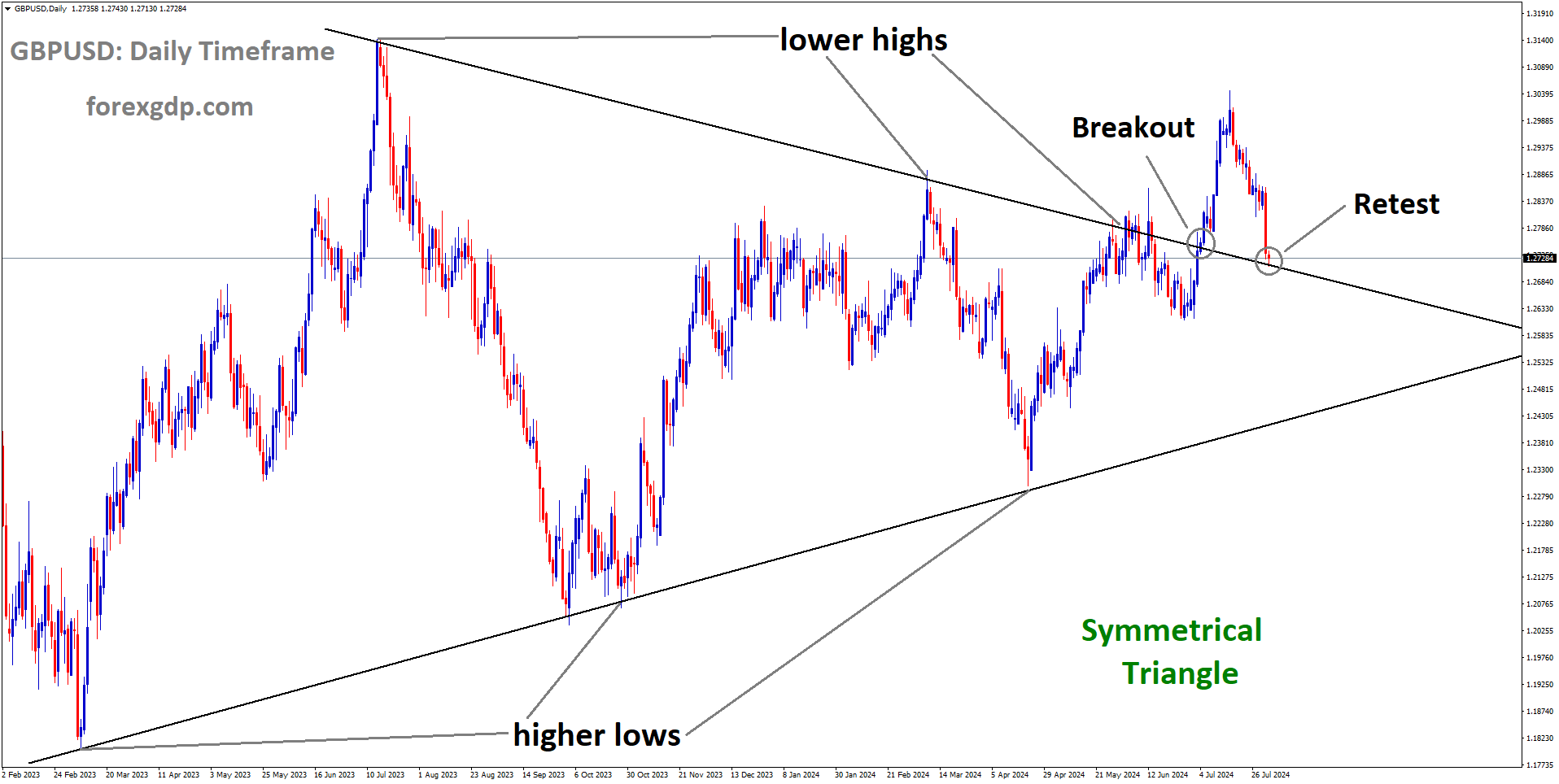Switzerland: First Major Economy to Cut Interest Rates in Unexpected Move
SNB Cut its interest rates at 25 basis points today to 1.50% from 1.75% previous reading. This rate cut is done by SNB caused by main reasons are inflation well below the 2% target in the first two months of 2024. GDP of 2023 came at 1.3% after the severe ratehikes by SNB when compared to 2.5% GDP Growth in 2022. So GDP and inflation came to lower level as per expectations met by SNB, So rate cuts is done in the market to help business to borrow capital at lesser cost and improve exports at cheaper Swiss Franc level.
USDCHF is moving box pattern and market has rebounded from the support area of the pattern
Swiss National Bank Surprises Markets with Interest Rate Cut
The Swiss National Bank (SNB) made an unexpected move on Thursday by reducing its main policy rate by 0.25 percentage points to 1.5%. This decision caught economists off guard, as they had anticipated the SNB to maintain rates at 1.75%. The SNB cited the likelihood of inflation remaining below 2% in the foreseeable future as the primary reason for the rate cut.
Inflation in Switzerland has been on a downward trend, with the latest data showing a decrease to 1.2% in February. Consequently, the SNB revised its inflation forecasts downwards, projecting an average inflation rate of 1.4% for 2024 and 1.2% for 2025. The bank’s first forecast for 2026 anticipates an average inflation rate of 1.1%.
Following the announcement, analysts predict that the SNB may implement two more rate cuts throughout the year, given the bank’s increasingly dovish stance and the likelihood of inflation falling below its forecasts. This decision would bring the policy rate to 1% by the end of 2026.
The upcoming September meeting is expected to be the last under the leadership of SNB Chairman Thomas Jordan, who will step down after 12 years in the role. The SNB foresees modest economic growth in Switzerland for the coming quarters, with GDP projected to expand by approximately 1% this year.
Amid global economic uncertainties and geopolitical tensions, the SNB remains committed to maintaining appropriate monetary conditions. While the bank acknowledges the risks posed by weaker economic activity abroad, it stands ready to intervene in the foreign exchange market if necessary to defend the Swiss franc.
Switzerland’s decision to cut interest rates marks a significant development, as it is the first major economy to do so amidst persistent inflationary pressures and global economic challenges. The move comes in contrast to Norway’s central bank, which opted to hold rates steady, and the Bank of England, which also kept rates unchanged.
SNB Rate Cut Leads to Swiss Franc Decline
SNB Cut its interest rates at 25 basis points today to 1.50% from 1.75% previous reading. This rate cut is done by SNB caused by main reasons are inflation well below the 2% target in the first two months of 2024. GDP of 2023 came at 1.3% after the severe ratehikes by SNB when compared to 2.5% GDP Growth in 2022. So GDP and inflation came to lower level as per expectations met by SNB, So rate cuts is done in the market to help business to borrow capital at lesser cost and improve exports at cheaper Swiss Franc level.
USDCHF has broken Ascending channel in upside
Swiss Franc Weakens as SNB Cuts Interest Rates
The Swiss Franc (CHF) slipped approximately one percent in its major pairings on Thursday following the Swiss National Bank (SNB) announcement of a 0.25% interest rate reduction at its March meeting.
This decision, contrary to market expectations of maintaining the status quo, was prompted by a notable drop in Swiss inflation earlier in the year and a slowdown in economic growth in 2023.
Lower interest rates typically deter foreign capital inflows, contributing to the Franc’s decline.
SNB’s Policy Adjustment in Response to Inflation Victory
The SNB justified its rate cut by highlighting its success in combating inflation over the past two and a half years. With inflation now below 2%—a level deemed stable by the SNB—it foresees inflation remaining within this range for the foreseeable future.
Factors such as the Franc’s appreciation and the need to stimulate economic activity were cited as additional reasons for the rate reduction.
The Swiss economy’s GDP growth, halved to 1.3% in 2023 compared to 2.5% in 2022, underscores the necessity for lower interest rates. Reduced borrowing costs for businesses and a weakened Franc will facilitate exports, aiding economic recovery.
Market Surprise and Revised Forecasts
The SNB’s decision caught markets off guard, with only a one in three chance of a rate cut predicted prior to the announcement. Furthermore, the bank revised down future inflation forecasts, anticipating growth constraints due to a resilient Swiss Franc and weakened global demand.
SNB Surprises by Cutting Rates Ahead of Global Peers
SNB Cut its interest rates at 25 basis points today to 1.50% from 1.75% previous reading. This rate cut is done by SNB caused by main reasons are inflation well below the 2% target in the first two months of 2024. GDP of 2023 came at 1.3% after the severe ratehikes by SNB when compared to 2.5% GDP Growth in 2022. So GDP and inflation came to lower level as per expectations met by SNB, So rate cuts is done in the market to help business to borrow capital at lesser cost and improve exports at cheaper Swiss Franc level.
USDCHF has broken Ascending channel in upside
The Swiss National Bank (SNB) made an unexpected decision on Thursday to reduce its main interest rate by 25 basis points to 1.50%. This move marks the first major central bank to ease its monetary policy aimed at curbing inflation. Additionally, the SNB lowered its interest rate on sight deposits to 1.50%.
This decision, the first rate cut in nine years, comes amidst a transitional period for the SNB, with long-serving Chairman Thomas Jordan set to step down in September. The unexpected rate cut caught markets off guard, resulting in a significant drop in the Swiss franc against the euro and a decline in Swiss government bond yields. Conversely, shares listed in Zurich experienced a boost.
Analysts, who had largely anticipated the SNB to maintain rates at 1.75%, were taken aback by the move. Karsten Junius, chief economist at J.Safra Sarasin, noted that the SNB’s decision to lower rates signifies its declaration of victory over inflation, a sentiment echoed by many in the financial community.
The decision follows a sustained decrease in Swiss inflation, which reached 1.2% in February, marking the ninth consecutive month within the SNB’s target range of 0-2%. Chairman Thomas Jordan emphasized the effectiveness of the SNB’s inflation-fighting measures over the past two and a half years, resulting in inflation remaining below 2% for an extended period.
The SNB justified its rate cut by citing reduced inflationary pressures and the appreciation of the Swiss franc over the past year. Furthermore, the bank asserted that the rate reduction would support economic activity. Prior to the decision, Swiss industries had urged the central bank to shift its focus from inflation control to addressing the challenges posed by the strong Swiss franc, which was impacting profits.
Philipp Burckhardt, Fixed Income Strategist and Portfolio Manager at Lombard Odier IM, described the rate cut as a logical response to current conditions and anticipated further cuts in the future. He also viewed it as a strategic move by outgoing Chairman Thomas Jordan to set the tone for his successor.
Regarding the timing of the rate cut, Chairman Jordan emphasized that the SNB’s decisions are made based on the prevailing conditions rather than concerns about being the first or last central bank to act. He refrained from providing explicit guidance on future rate moves but indicated that the SNB would closely monitor inflation forecasts and adjust monetary policy accordingly.
While the SNB took preemptive action, other major central banks have yet to follow suit. The European Central Bank (ECB) is expected to initiate its first rate cut in June, while the U.S. Federal Reserve has maintained its outlook for three rate cuts this year. However, not all central banks are moving in the same direction, as evidenced by recent rate hikes by central banks in Taiwan and Turkey in response to inflation concerns.
The SNB’s decision was considered bold given its traditionally cautious approach. UBS economist Alessandro Bee characterized it as a brave move, indicating that while surprising, it was a possibility due to Switzerland’s low inflation. The SNB revised its inflation forecasts downwards, anticipating average inflation of 1.4% in 2024 and 1.2% in 2025.
Don’t trade all the time, trade forex only at the confirmed trade setups.
Get more confirmed trade setups here: forexgdp.com/buy/


